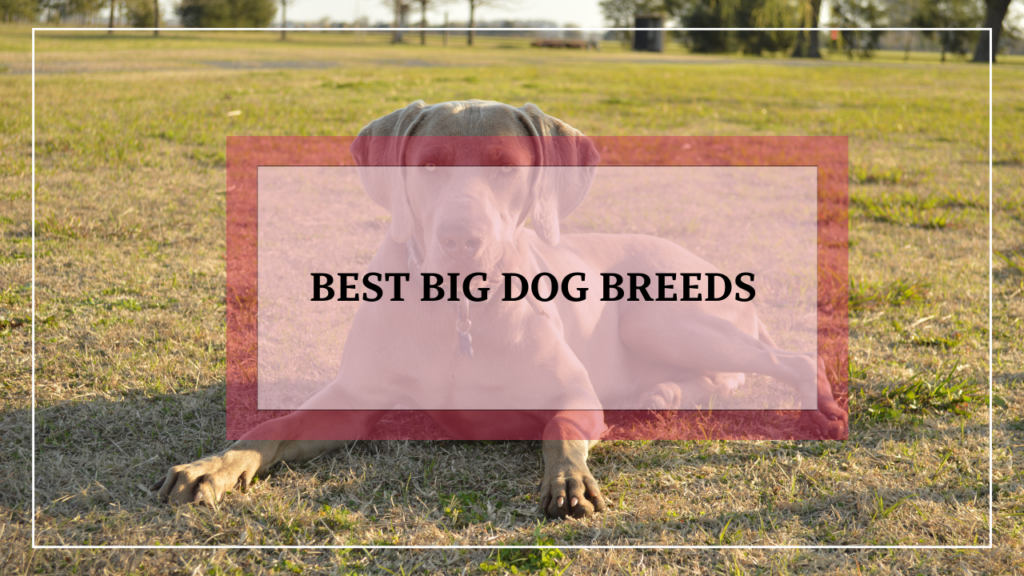When it comes to choosing a dog, size matters. Big dog breeds can be incredibly loyal, protective, and affectionate companions. They often have a commanding presence that makes them perfect for guarding the home, while also being gentle giants that adore their families. But before welcoming a large breed into your home, it’s important to understand what you’re getting into. From space requirements to exercise needs, big dogs bring unique challenges and rewards. In this guide, we’ll explore everything you need to know about the best big dog breeds, helping you find the right fit for your lifestyle.
What Makes a Dog Breed Considered “Big”?
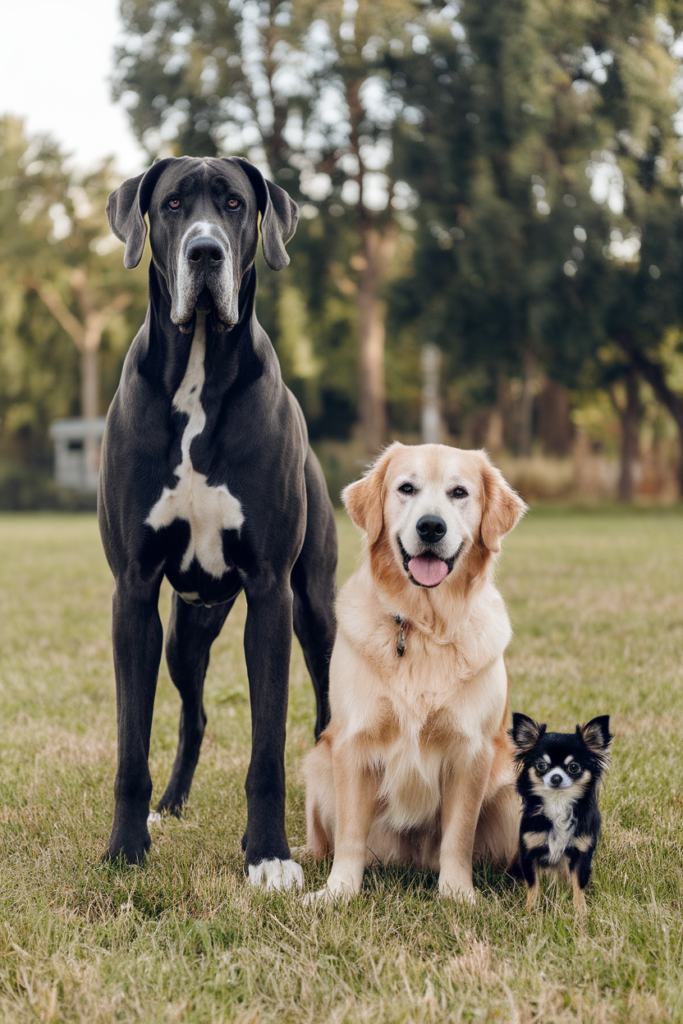
Big dog breeds are typically classified based on their size, with weight and height being the primary factors. Generally, a dog weighing over 50 to 60 pounds falls into the “big dog” category, though some breeds can easily surpass 100 pounds. Height is also a factor, with many large breeds standing over 24 inches tall at the shoulder.
Comparison with Medium and Small Breeds:
- Medium Breeds: Usually weigh between 25 to 50 pounds and stand between 15 to 24 inches tall. They often require less space and exercise compared to larger breeds but still make great companions for active families.
- Small Breeds: Weigh under 25 pounds and are typically under 15 inches tall. These dogs are better suited for apartment living and require less physical activity.
While small and medium breeds have their own charm, large dogs often bring unique qualities like enhanced loyalty, protective instincts, and a more imposing presence. This makes them ideal for various roles, including family pets, working dogs, and guard dogs.
Benefits of Owning a Big Dog Breed

Big dogs have a lot to offer, from their protective instincts to their loyal companionship. Here’s a deeper look at why so many people are drawn to large dog breeds:
Loyal Companionship
Big dogs are known for their deep bond with their owners. Many large breeds are incredibly loyal, often forming strong attachments to their families. They thrive on being close to their humans, providing a sense of security and emotional comfort. According to a study by the American Kennel Club, larger dogs tend to exhibit more stable and predictable behaviors compared to smaller breeds, making them excellent companions.
Protective Nature
One of the standout benefits of owning a big dog is their natural protective instinct. Breeds like the German Shepherd and Rottweiler are known for their guarding abilities, making them ideal watchdogs. These dogs are not only physically imposing but also incredibly alert, often sensing danger before it even reaches your doorstep. A report from the National Canine Research Council found that homes with large dog breeds are less likely to experience break-ins, simply because of the deterrence factor.
Great for Active Lifestyles
If you’re someone who loves the outdoors, a big dog breed can be the perfect partner. Breeds like the Labrador Retriever and Siberian Husky are known for their high energy levels and love of physical activity. Whether it’s hiking, running, or playing fetch, big dogs often require and enjoy rigorous exercise, making them ideal companions for active individuals or families.
Family-Friendly
Many big dog breeds are gentle giants, known for their patience and tolerance with children. Breeds like the Golden Retriever and Bernese Mountain Dog are particularly known for being great with kids. Their size may be intimidating, but their temperament is often calm and affectionate, making them perfect family pets.
Case Study: A family in Colorado adopted a Golden Retriever and found that the dog not only bonded with their children but also became an essential part of their outdoor activities. The dog would join them on hikes, camping trips, and even snowshoeing, providing companionship and ensuring the kids stayed safe.
Key Considerations Before Choosing a Big Dog Breed

Owning a big dog breed comes with a set of unique responsibilities that go beyond what you’d encounter with smaller breeds. Before deciding on a large canine companion, it’s important to evaluate whether you can meet their specific needs. Here are the key considerations you should keep in mind:
Space Requirements
Big dogs need space—both indoors and outdoors. While some large breeds can adapt to apartment living, most require ample room to move around freely. For example, breeds like the Great Dane or Mastiff might seem like couch potatoes, but they still need a spacious environment to stretch out comfortably. If you have a small living space, you may need to reconsider whether a large dog breed is the right fit.
- Yard Space: If you have a backyard, ensure it’s secure and large enough for your dog to run and play. For high-energy breeds, access to a large outdoor area is essential.
- Indoor Space: Even if your dog is mostly indoors, make sure there’s enough room for them to navigate without bumping into furniture or feeling confined.
Exercise Needs
Big dogs typically have higher exercise requirements compared to smaller breeds. Active breeds like the German Shepherd and Siberian Husky need plenty of daily exercise to keep them physically and mentally stimulated. Without sufficient exercise, large dogs can become bored and may develop behavioral issues such as chewing, digging, or excessive barking.
- Daily Exercise: Plan for at least 1-2 hours of exercise daily. This can include walks, playtime, or specific activities like agility training.
- Outdoor Adventures: Breeds like the Labrador Retriever thrive on outdoor activities such as hiking, swimming, and running. If you’re an outdoor enthusiast, a big dog breed could be your ideal companion.
Feeding and Diet
Feeding a large dog comes with its own set of challenges. Big dogs eat more than smaller dogs, which means higher food costs. Moreover, their diets need to be carefully managed to ensure they receive the right nutrients, particularly for bone and joint health. According to the American Veterinary Medical Association (AVMA), large breeds are more prone to obesity, so portion control is crucial.
- Quantity: On average, large breeds consume between 4-6 cups of high-quality dog food per day, depending on their activity level.
- Special Diets: Some large breeds may require diets formulated to support joint health and prevent common issues like hip dysplasia. Look for foods rich in omega-3 fatty acids, glucosamine, and chondroitin.
Health and Lifespan
Big dogs often have shorter lifespans compared to smaller breeds, primarily due to their size and the strain it puts on their bodies. For example, the average lifespan of a Great Dane is around 7-10 years, while smaller breeds like the Chihuahua can live up to 15 years or more. Understanding the health challenges associated with large breeds can help you better prepare for potential medical issues.
- Common Health Issues: Large breeds are prone to specific health problems, including hip dysplasia, bloat (gastric dilatation-volvulus), and arthritis. Regular veterinary check-ups and preventative care are essential.
- Lifespan Considerations: While large dogs may not live as long as their smaller counterparts, providing them with proper care, a balanced diet, and regular exercise can help maximize their lifespan.
Grooming Requirements
Grooming needs vary greatly among big dog breeds. Some large dogs, like the Golden Retriever or Bernese Mountain Dog, have thick coats that require regular brushing to prevent matting and reduce shedding. Others, like the Boxer or Doberman Pinscher, have short coats that are relatively low-maintenance.
- Long-Coated Breeds: Breeds with long or dense coats will need frequent brushing, especially during shedding seasons. Investing in a good-quality brush and deshedding tool is recommended.
- Short-Coated Breeds: While short-coated dogs are easier to groom, they still benefit from occasional brushing to remove loose hair and distribute natural oils.
Training and Socialization
Training is particularly important for big dog breeds due to their size and strength. Without proper training, large dogs can become difficult to manage, especially in public settings. Early training and socialization are key to ensuring your dog is well-behaved and comfortable around people and other animals.
- Start Early: Begin training and socialization as soon as you bring your puppy home. Consistency and positive reinforcement are crucial for success.
- Socialization: Expose your dog to a variety of environments, people, and other animals to build their confidence and reduce anxiety.
Quick Tip: If you’re considering a big dog breed, think about your daily routine and whether you can commit to their needs. Remember: A tired dog is a happy dog, especially when it comes to large breeds that require both mental and physical stimulation.
Best Big Dog Breeds for Families
When it comes to family life, not all big dog breeds are created equal. Some large breeds are known for their gentle, patient, and friendly nature, making them perfect companions for families with children. Below, we’ll explore some of the best big dog breeds that are well-suited for family life, considering factors like temperament, energy levels, and compatibility with kids.
1. Golden Retriever

Golden Retrievers are often considered the epitome of the perfect family dog. They are known for their friendly and tolerant attitude, making them excellent companions for children. According to the American Kennel Club (AKC), Golden Retrievers consistently rank as one of the most popular dog breeds in the United States, largely due to their gentle nature and intelligence.
- Temperament: Friendly, trustworthy, and eager to please.
- Energy Level: High. They require plenty of exercise, such as running, swimming, or playing fetch.
- Good with Kids: Golden Retrievers are known for their patience and gentle demeanor with children, making them ideal for families.
Fun Fact: Golden Retrievers are often used as therapy dogs due to their calm and friendly nature.
2. Labrador Retriever
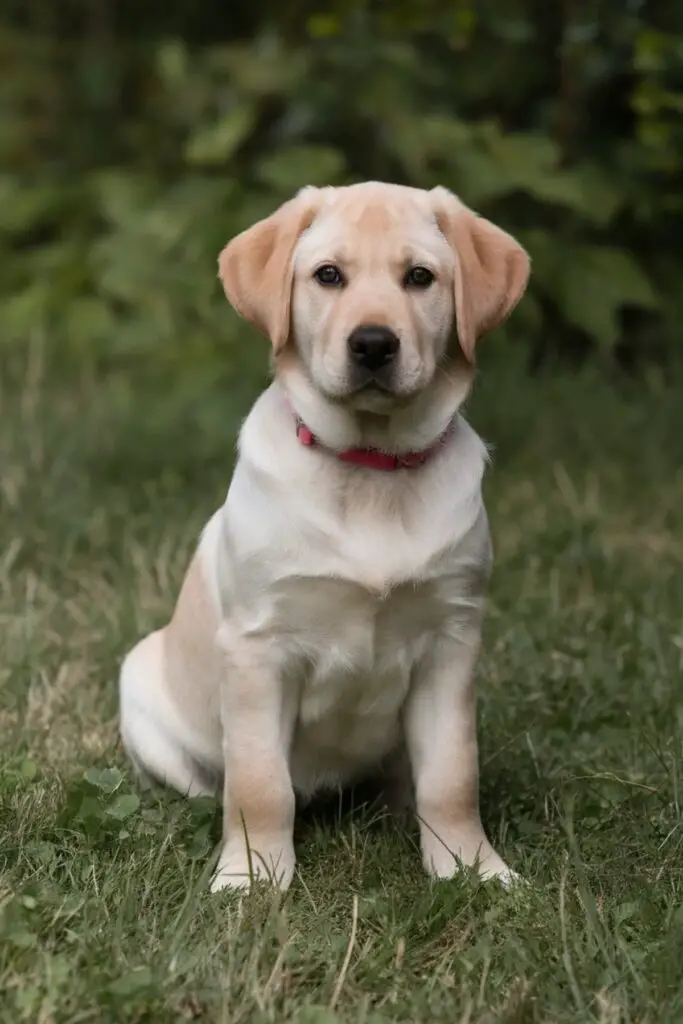
Another family favorite, the Labrador Retriever, is known for its playful and energetic nature. Labs are incredibly loyal and are excellent with children, often forming strong bonds with their human families. They’re also versatile dogs that can excel in various activities, from playing fetch to participating in dog sports.
- Temperament: Outgoing, even-tempered, and good-natured.
- Energy Level: High. Labs need regular exercise to keep them mentally and physically stimulated.
- Good with Kids: Labradors are known for being gentle and protective around children, making them great family pets.
Case Study: A family in Oregon adopted a Labrador Retriever and found that the dog not only kept their children entertained but also served as a loyal protector during outdoor adventures.
3. Bernese Mountain Dog

The Bernese Mountain Dog is a gentle giant that is known for its calm and affectionate nature. Despite their large size, Bernese Mountain Dogs are incredibly gentle with children and are known for their patience. They are also highly adaptable, making them great companions for both city and country living.
- Temperament: Affectionate, calm, and loyal.
- Energy Level: Moderate. While they enjoy outdoor activities, they are also content with relaxing at home.
- Good with Kids: Their patient and gentle nature makes them great around children, and they often become deeply attached to their families.
Quick Tip: Bernese Mountain Dogs have a thick coat that requires regular grooming, especially during shedding seasons.
4. Boxer
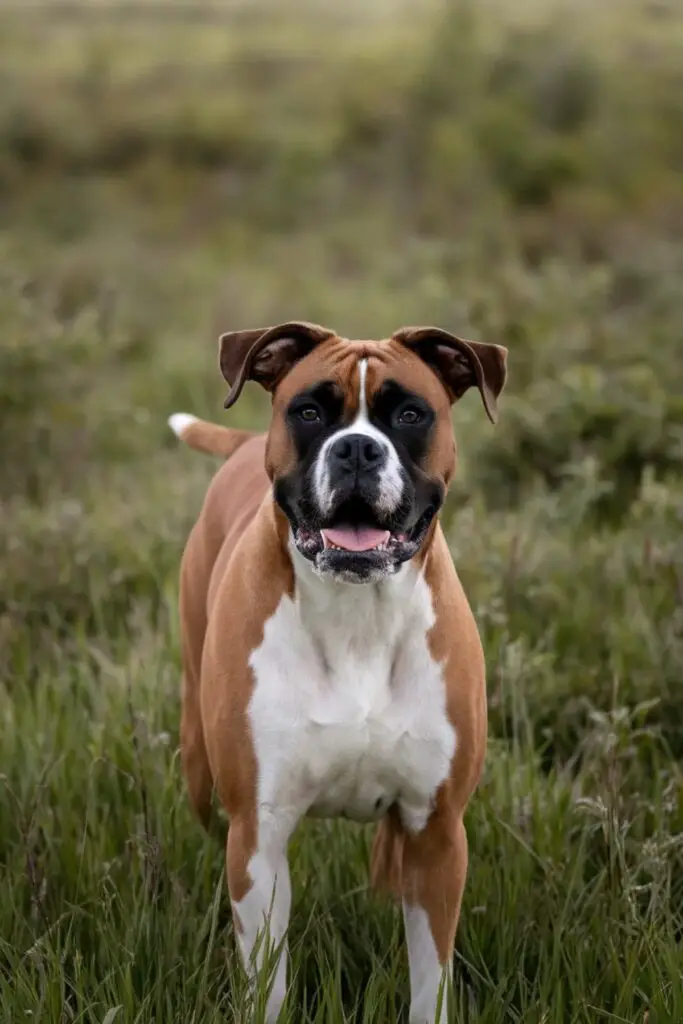
Boxers are energetic, playful, and protective, making them excellent family dogs. They are known for their boundless energy and love for play, which makes them particularly well-suited for families with active children. Boxers are also highly protective of their families, making them excellent watchdogs.
- Temperament: Fun-loving, loyal, and alert.
- Energy Level: High. Boxers need plenty of exercise and mental stimulation to keep them happy.
- Good with Kids: Boxers are known for their playful nature and patience with children, making them great companions for active families.
Fun Fact: Boxers are known for their unique “boxing” motion, where they use their front paws during play.
5. Newfoundland
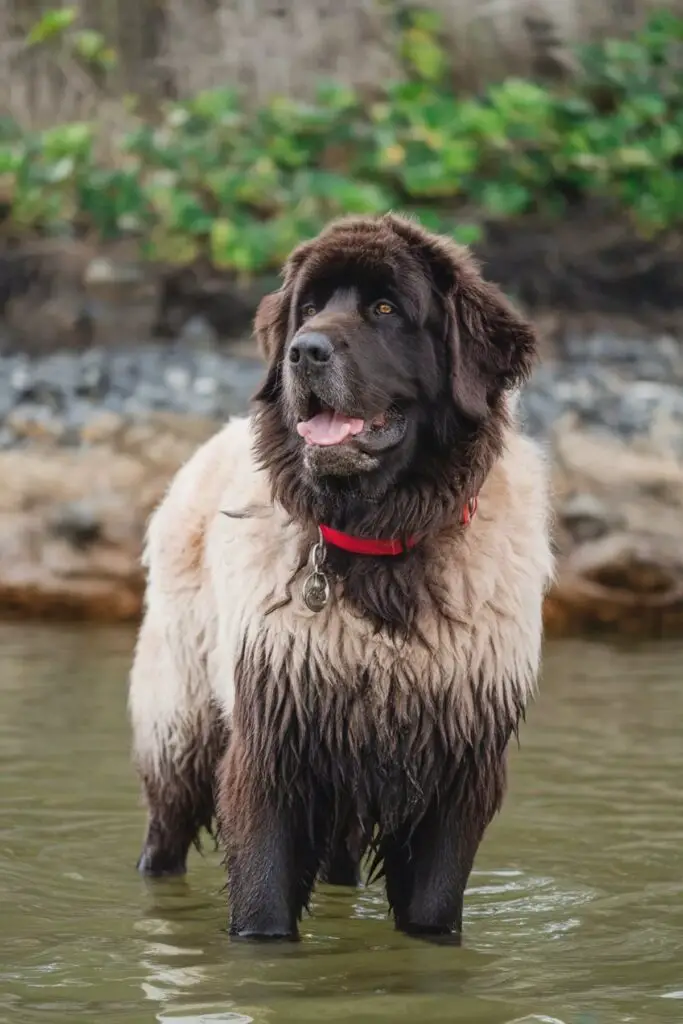
Newfoundlands are often referred to as “nanny dogs” due to their gentle and protective nature around children. These large dogs are known for their sweet temperament and love of water. Despite their size, Newfoundlands are incredibly gentle and patient, making them ideal for families with young children.
- Temperament: Gentle, patient, and protective.
- Energy Level: Moderate. Newfoundlands enjoy outdoor activities but are also content with leisurely walks.
- Good with Kids: Newfoundlands are known for their gentle nature and protective instincts, making them great companions for children.
Quick Fact: Newfoundlands are excellent swimmers and have been known to rescue people from drowning.
6. Irish Setter
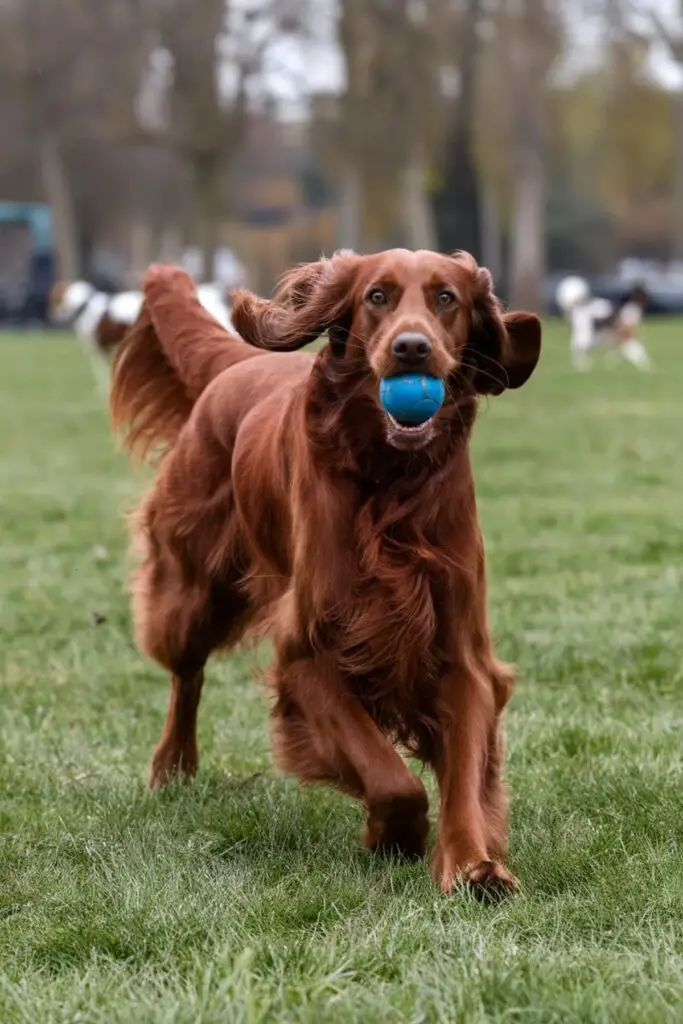
Irish Setters are known for their high energy levels and love for play, making them great companions for families with active children. They are affectionate, outgoing, and thrive on human interaction. Irish Setters are also known for their beautiful, flowing red coats, which require regular grooming.
- Temperament: Friendly, energetic, and affectionate.
- Energy Level: High. Irish Setters need regular exercise and enjoy activities like running and playing fetch.
- Good with Kids: Their playful and friendly nature makes them great companions for children.
Fun Fact: Irish Setters were originally bred as hunting dogs, and their energy levels reflect their active heritage.
Table: Quick Comparison of Family-Friendly Big Dog Breeds
| Breed | Temperament | Energy Level | Good with Kids | Special Notes |
| Golden Retriever | Friendly, trustworthy | High | Excellent | Popular therapy dog breed |
| Labrador Retriever | Outgoing, even-tempered | High | Excellent | Great for active families |
| Bernese Mountain Dog | Affectionate, calm | Moderate | Excellent | Requires regular grooming |
| Boxer | Fun-loving, loyal | High | Excellent | High energy, needs lots of play |
| Newfoundland | Gentle, patient | Moderate | Excellent | Known as the “nanny dog” |
| Irish Setter | Friendly, energetic | High | Excellent | Requires regular grooming |
Best Big Dog Breeds for Active Individuals
For active individuals and families who enjoy outdoor adventures, exercise, and sports, a big dog breed that can keep up with your lifestyle is essential. Big dogs with high energy levels and a love for physical activity make perfect companions for those who lead an active life. Here are some of the best big dog breeds that thrive on exercise and adventure:
1. Siberian Husky
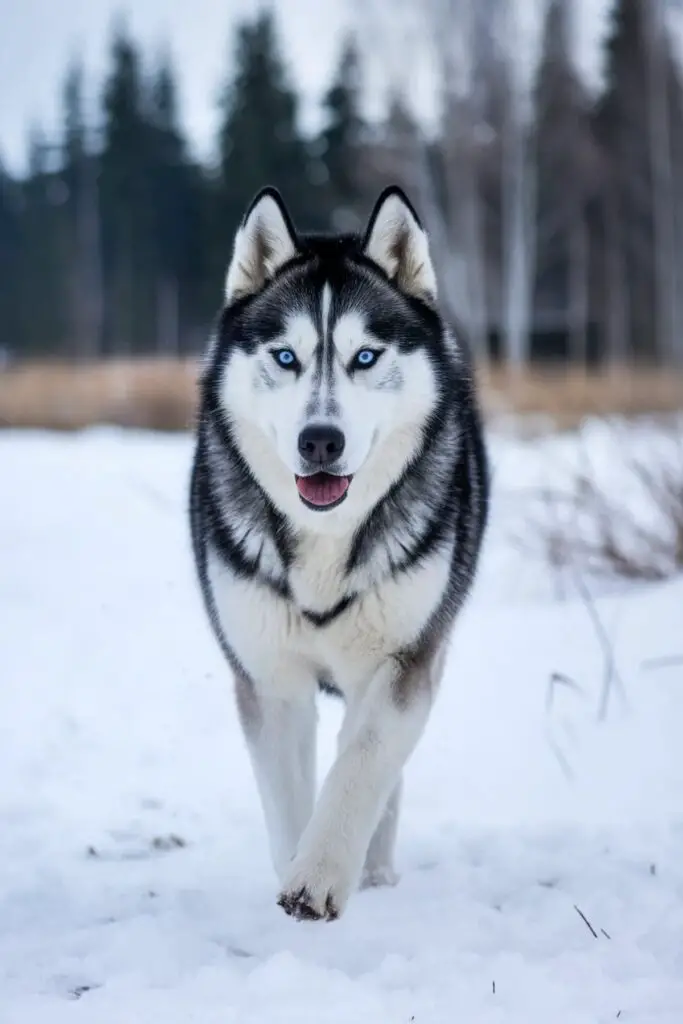
Siberian Huskies are renowned for their high energy levels and endurance. Originally bred as sled dogs in harsh Arctic conditions, they have a natural inclination for running and outdoor activities. Huskies are also known for their friendly and outgoing personalities.
- Temperament: Friendly, outgoing, and independent.
- Energy Level: Very high. Huskies need a lot of exercise and mental stimulation to stay happy.
- Good for Active Individuals: Ideal for running, hiking, and other high-energy activities.
Fun Fact: Siberian Huskies are known for their striking blue or multi-colored eyes and their unique “howl” vocalizations.
2. German Shepherd
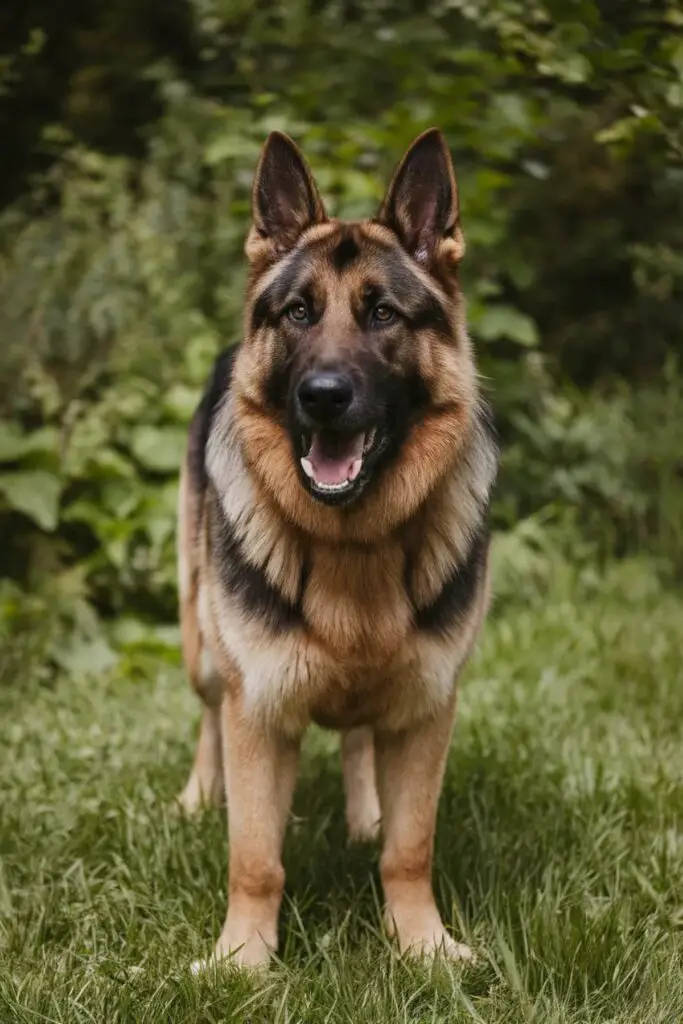
German Shepherds are one of the most versatile and energetic big dog breeds. They are often used in police and military work due to their intelligence and stamina. German Shepherds excel in various activities, from obedience training to agility sports.
- Temperament: Intelligent, loyal, and energetic.
- Energy Level: High. They require regular exercise and enjoy mental challenges.
- Good for Active Individuals: Excellent for activities like agility training, running, and hiking.
Case Study: A professional dog trainer in California found that German Shepherds excelled in agility courses due to their high intelligence and quick learning ability.
3. Weimaraner
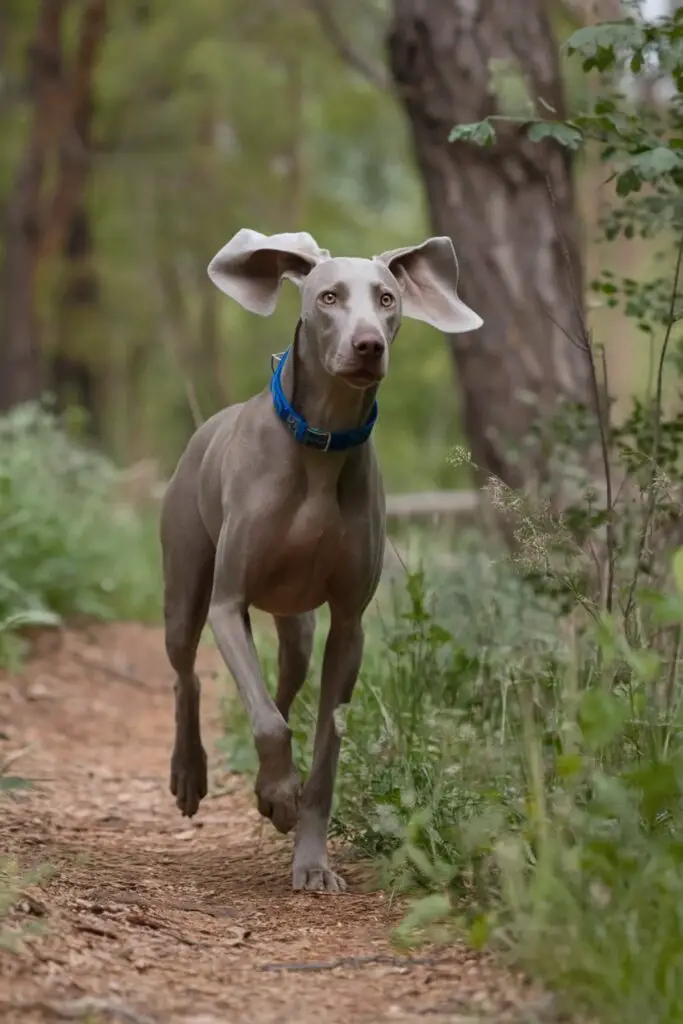
Weimaraners are known for their sleek, athletic build and high energy. Originally bred as hunting dogs, they have a strong prey drive and require plenty of exercise. They are excellent for running and outdoor adventures.
- Temperament: Energetic, intelligent, and affectionate.
- Energy Level: Very high. Weimaraners need substantial daily exercise and mental stimulation.
- Good for Active Individuals: Perfect for running, hiking, and other high-intensity activities.
Quick Tip: Due to their short coat, Weimaraners are relatively low-maintenance in terms of grooming.
4. Alaskan Malamute
Alaskan Malamutes are powerful, energetic dogs originally bred for hauling heavy loads across snowy terrains. They are built for endurance and thrive in cold climates, making them ideal for winter sports and activities.
- Temperament: Independent, strong-willed, and affectionate.
- Energy Level: High. Malamutes require lots of exercise and enjoy activities like sledding and hiking.
- Good for Active Individuals: Excellent for cold-weather activities and long-distance running.
Fun Fact: Alaskan Malamutes have a thick double coat that helps them withstand cold temperatures, but it requires regular grooming to manage shedding.
5. Belgian Malinois
The Belgian Malinois is a highly energetic and intelligent breed often used in police and military roles. They are agile and excel in various dog sports, including obedience, agility, and protection work.
- Temperament: Intelligent, alert, and energetic.
- Energy Level: Very high. They need ample exercise and mental challenges.
- Good for Active Individuals: Ideal for agility training, running, and advanced obedience work.
Case Study: A Belgian Malinois was used in a search and rescue operation and demonstrated remarkable endurance and agility, showcasing their suitability for high-intensity activities.
6. Rhodesian Ridgeback
Rhodesian Ridgebacks are known for their impressive stamina and speed. Originally bred to hunt large game in Africa, they are built for endurance and require significant exercise to keep them healthy and happy.
- Temperament: Independent, loyal, and intelligent.
- Energy Level: High. They need regular exercise and enjoy running and outdoor play.
- Good for Active Individuals: Perfect for long runs and hiking.
Quick Fact: The Rhodesian Ridgeback is named for the distinctive “ridge” of hair running along its back, which grows in the opposite direction to the rest of the coat.
Table: Quick Comparison of Big Dog Breeds for Active Individuals
| Breed | Temperament | Energy Level | Good for Activities | Special Notes |
| Siberian Husky | Friendly, outgoing | Very high | Running, hiking, sledding | Known for their striking blue eyes |
| German Shepherd | Intelligent, loyal | High | Agility training, running, hiking | Excellent working dog |
| Weimaraner | Energetic, intelligent | Very high | Running, hiking, high-intensity sports | Short coat, low grooming needs |
| Alaskan Malamute | Independent, strong-willed | High | Cold-weather activities, sledding | Thick double coat requires grooming |
| Belgian Malinois | Intelligent, alert | Very high | Agility training, advanced obedience | Used in police and military work |
| Rhodesian Ridgeback | Independent, loyal | High | Long runs, hiking | Known for unique ridge of hair |
Best Big Dog Breeds for First-Time Owners
For first-time dog owners, selecting the right breed can make a significant difference in how smoothly the experience goes. Big dog breeds often come with unique challenges due to their size and energy levels. However, some large breeds are known for their more manageable temperament and ease of training, making them suitable for those new to dog ownership. Here are some of the best big dog breeds for first-time owners:
1. Labrador Retriever
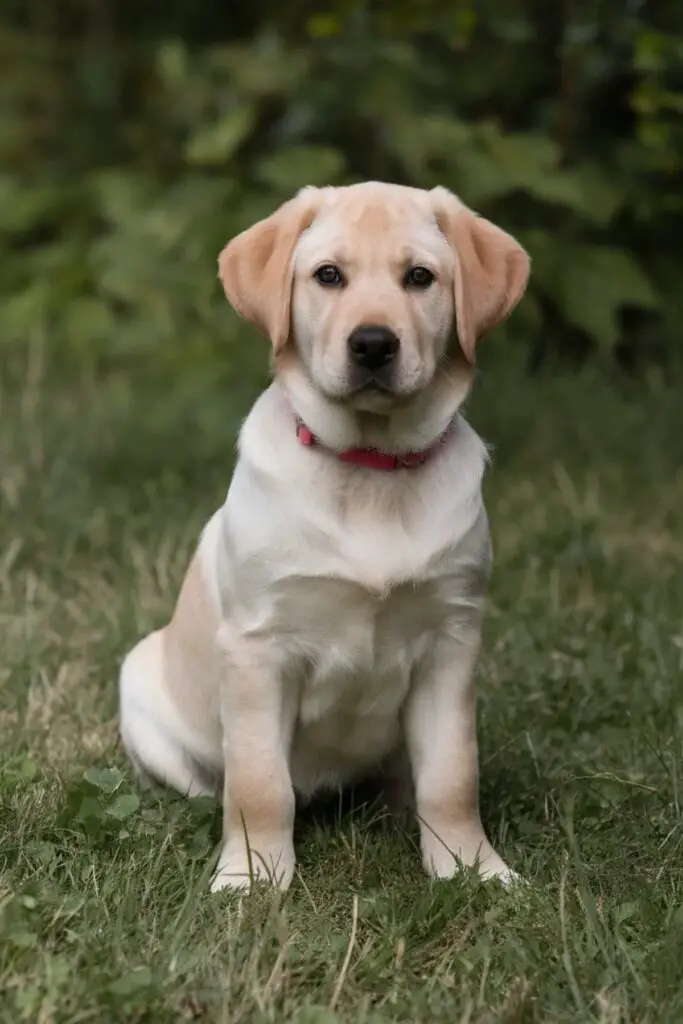
Labrador Retrievers are renowned for their friendly nature and ease of training, making them ideal for first-time dog owners. They are highly adaptable, intelligent, and eager to please, which simplifies the training process.
- Temperament: Friendly, outgoing, and easygoing.
- Training: Labs are quick learners and respond well to positive reinforcement.
- Good for First-Time Owners: Their adaptable nature and strong bond with humans make them a great choice for beginners.
Case Study: A family new to dog ownership found that their Labrador Retriever quickly adapted to their home environment and was easy to train, leading to a harmonious relationship.
2. Bernese Mountain Dog
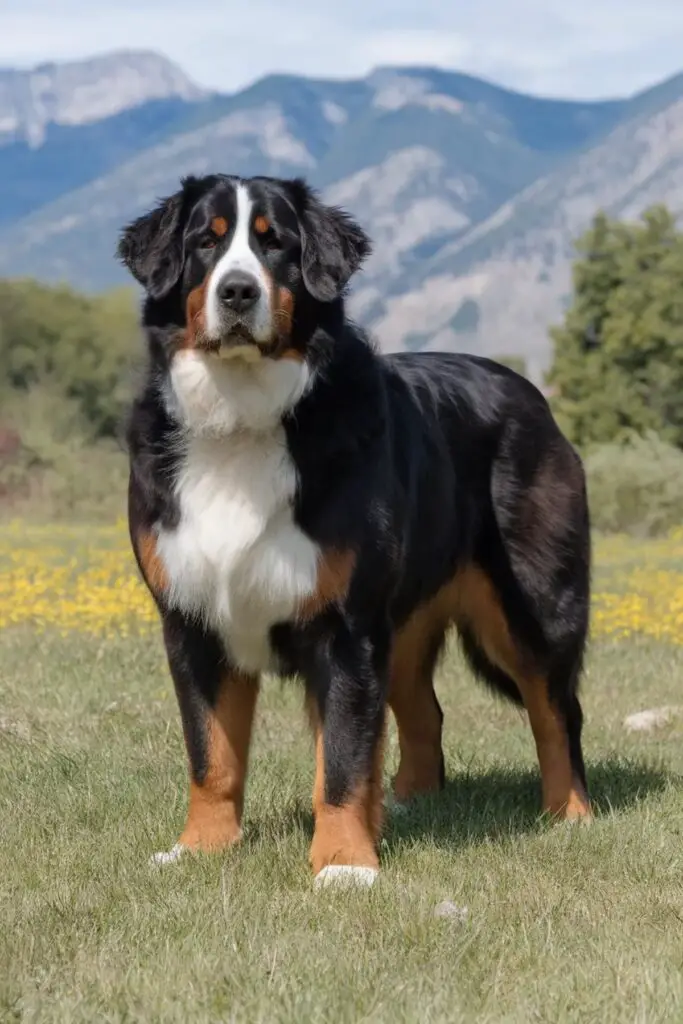
Bernese Mountain Dogs are known for their calm demeanor and affectionate nature. They are generally easygoing and get along well with children and other pets, which makes them a good fit for first-time owners.
- Temperament: Calm, gentle, and affectionate.
- Training: They are intelligent but may have a slightly stubborn streak. Consistent and positive training methods work best.
- Good for First-Time Owners: Their gentle nature and patience make them easy to manage for those new to owning a large dog.
Quick Tip: Regular grooming is required due to their thick coat, so be prepared to invest time in brushing.
3. Golden Retriever
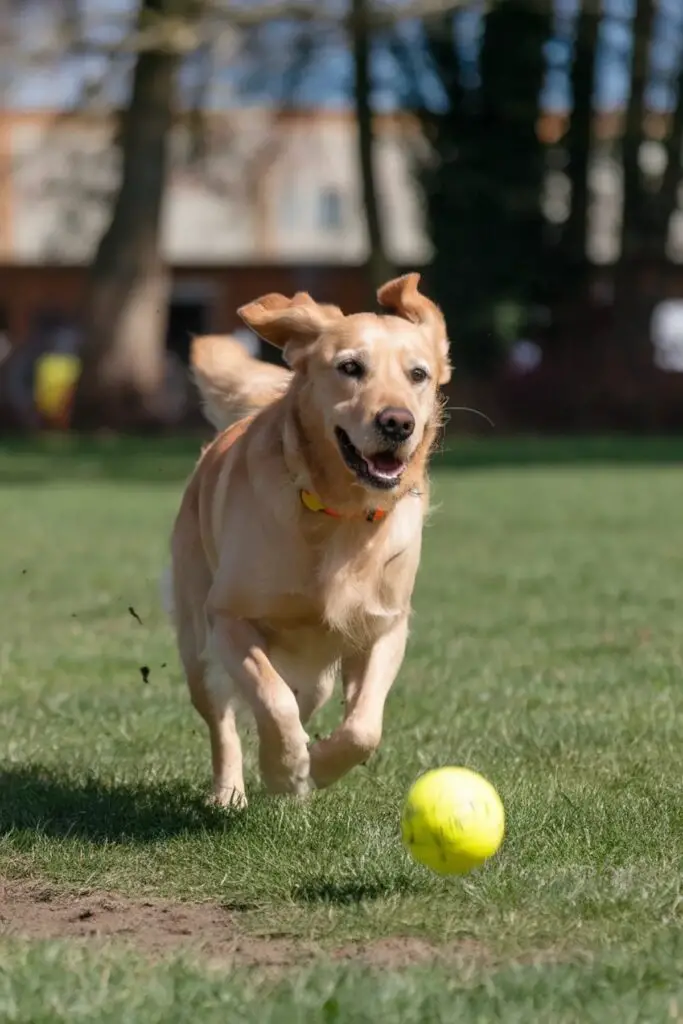
Golden Retrievers are another excellent choice for first-time dog owners due to their friendly disposition and trainability. They are patient, loving, and well-suited to family life, which makes them a great addition to a new dog owner’s home.
- Temperament: Friendly, loyal, and patient.
- Training: Golden Retrievers are highly trainable and respond well to positive reinforcement.
- Good for First-Time Owners: Their easygoing nature and intelligence make them suitable for those who are new to dog ownership.
Fun Fact: Golden Retrievers are often used as therapy dogs due to their gentle and caring nature.
4. Boxer
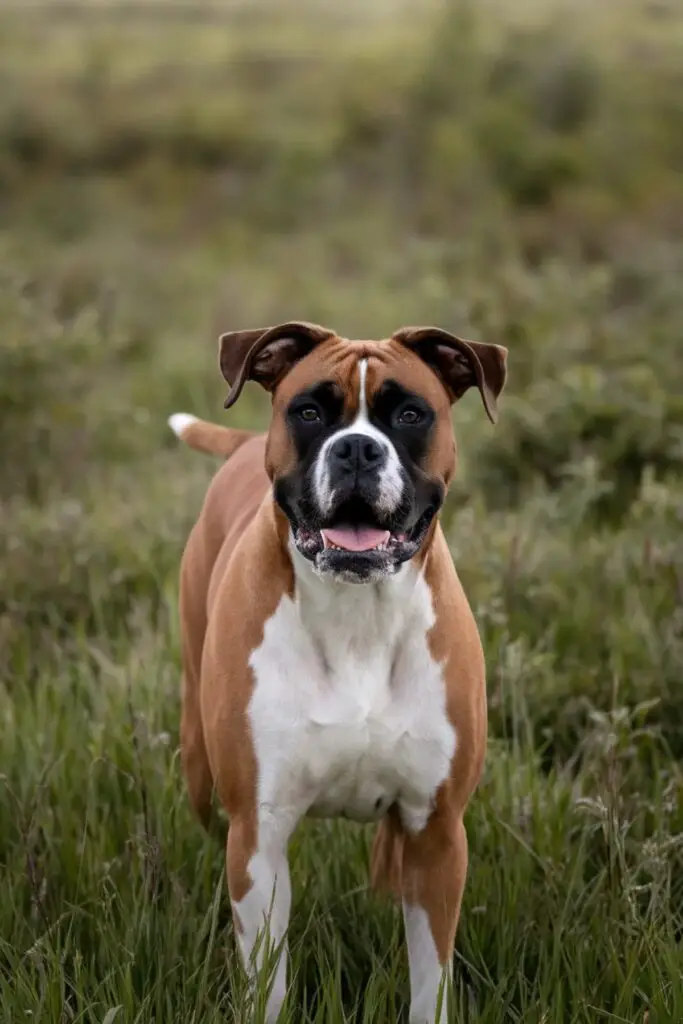
Boxers are energetic and affectionate dogs that are generally good with families and children. They are known for their playful nature and can adapt well to new environments, making them a good choice for first-time owners.
- Temperament: Playful, affectionate, and alert.
- Training: They are intelligent and eager to please but can be a bit stubborn. Consistent training and positive reinforcement are key.
- Good for First-Time Owners: Their playful nature and adaptability make them a manageable and enjoyable companion for beginners.
Quick Tip: Boxers need regular exercise to keep them happy and healthy, so be prepared for daily physical activity.
5. Irish Setter

Irish Setters are known for their friendly and energetic nature. They are generally good with children and are known to be affectionate and enthusiastic, which makes them suitable for first-time dog owners who can meet their exercise needs.
- Temperament: Friendly, energetic, and affectionate.
- Training: They are intelligent and eager to please but require consistent training to manage their high energy levels.
- Good for First-Time Owners: Their friendly nature and trainability make them a good option for those new to dog ownership, provided they can handle their energy levels.
Fun Fact: Irish Setters are known for their beautiful red coats and are often seen in dog shows due to their impressive appearance and energetic personality.
Table: Quick Comparison of Big Dog Breeds for First-Time Owners
| Breed | Temperament | Training Ease | Good for First-Time Owners | Special Notes |
| Labrador Retriever | Friendly, outgoing | Easy | Excellent | Highly adaptable and trainable |
| Bernese Mountain Dog | Calm, gentle | Moderate | Good | Requires regular grooming |
| Golden Retriever | Friendly, loyal | Easy | Excellent | Often used as therapy dogs |
| Boxer | Playful, affectionate | Moderate | Good | Needs regular exercise |
| Irish Setter | Friendly, energetic | Moderate | Good | Requires regular exercise and grooming |
Best Big Dog Breeds for Specific Living Situations
Selecting a big dog breed that suits your living situation is crucial for ensuring both you and your dog are happy. Different breeds have different needs and characteristics that make them more suitable for specific environments. Below, we’ll explore the best big dog breeds for various living situations, including urban apartments, rural properties, and homes with large yards.
1. Best Big Dog Breeds for Urban Apartments
Living in an urban apartment presents unique challenges, such as limited space and less access to outdoor areas. Despite these constraints, some big dog breeds are adaptable enough to thrive in apartment settings.
a. Great Dane
Great Danes, despite their size, can adapt well to apartment living if they get adequate exercise. They are known for their calm demeanor and can be quite relaxed indoors.
- Temperament: Gentle, calm, and affectionate.
- Exercise Needs: Moderate. They need regular walks but are generally content to relax indoors.
- Good for Urban Apartments: Their calm nature makes them suitable for apartment living, as long as they receive sufficient daily exercise.
Fun Fact: Great Danes are often referred to as “gentle giants” due to their large size and friendly nature.
b. Irish Wolfhound
Irish Wolfhounds are another breed that can adapt to apartment life if they receive regular exercise. They are known for their gentle and quiet demeanor.
- Temperament: Gentle, reserved, and calm.
- Exercise Needs: Moderate. They need regular walks but are generally low-energy indoors.
- Good for Urban Apartments: Their calm nature and low energy levels make them a good fit for apartment living.
Quick Tip: Irish Wolfhounds have a short coat that is relatively easy to manage, making them suitable for indoor living.
c. Bernese Mountain Dog
Bernese Mountain Dogs can live comfortably in apartments if they get plenty of exercise and mental stimulation. They are known for their affectionate and easygoing nature.
- Temperament: Affectionate, calm, and patient.
- Exercise Needs: Moderate. Regular walks and some playtime are essential.
- Good for Urban Apartments: They are generally adaptable to apartment living, provided they receive adequate exercise.
Fun Fact: Bernese Mountain Dogs are known for their loyalty and tend to form strong bonds with their owners.
2. Best Big Dog Breeds for Rural Properties
Rural properties often provide ample space and access to outdoor areas, which suits big dogs that need room to roam and explore. Here are some breeds that thrive in rural environments:
a. Australian Shepherd
Australian Shepherds are highly energetic and thrive in open spaces where they can run and herd. They are well-suited for rural properties with plenty of land.
- Temperament: Energetic, intelligent, and hardworking.
- Exercise Needs: High. They need plenty of exercise and mental stimulation.
- Good for Rural Properties: Ideal for properties with lots of space where they can exercise and work.
Case Study: An Australian Shepherd on a rural farm was found to be highly effective in managing livestock, showcasing their suitability for open spaces.
b. Border Collie
Border Collies are known for their intelligence and energy. They excel in environments where they have plenty of space to run and engage in activities.
- Temperament: Intelligent, energetic, and focused.
- Exercise Needs: Very high. They require significant physical and mental stimulation.
- Good for Rural Properties: Perfect for rural areas where they can run freely and engage in herding activities.
Quick Tip: Border Collies are highly trainable and can excel in various dog sports, making them versatile companions for active environments.
c. English Mastiff
English Mastiffs are large and gentle dogs that can adapt well to rural living due to their calm nature and need for space.
- Temperament: Gentle, calm, and protective.
- Exercise Needs: Moderate. They need regular walks but are generally content with a relaxed lifestyle.
- Good for Rural Properties: Their large size and calm nature make them suitable for spacious environments.
Fun Fact: English Mastiffs are known for their impressive size and gentle disposition, making them excellent watchdogs for rural properties.
3. Best Big Dog Breeds for Homes with Large Yards
Having a large yard provides ample space for big dogs to play and exercise. Here are some breeds that excel in homes with large yards:
a. Labrador Retriever
Labrador Retrievers are highly energetic and thrive in environments where they have plenty of space to play and run.
- Temperament: Friendly, energetic, and outgoing.
- Exercise Needs: High. They need regular exercise and enjoy playing fetch and running.
- Good for Large Yards: Their energy and playfulness make them well-suited for homes with large yards.
Quick Tip: Labradors are known for their love of water, so a yard with access to a pool or pond can be a great addition.
b. Doberman Pinscher
Doberman Pinschers are known for their athleticism and high energy. They thrive in environments where they can run and play freely.
- Temperament: Alert, energetic, and loyal.
- Exercise Needs: High. They need regular physical activity and mental stimulation.
- Good for Large Yards: Ideal for homes with large yards where they can exercise and play.
Fun Fact: Dobermans are known for their sleek appearance and are often used in police and security work due to their alertness and intelligence.
c. Rottweiler
Rottweilers are strong and energetic dogs that thrive in environments with plenty of space. They are known for their loyalty and protective nature.
- Temperament: Loyal, confident, and protective.
- Exercise Needs: High. They require regular exercise and enjoy playing in large yards.
- Good for Large Yards: Their strength and energy make them well-suited for homes with ample space.
Case Study: A Rottweiler in a large backyard was observed to have excellent playtime and exercise, which contributed to their overall happiness and well-being.
Table: Quick Comparison of Big Dog Breeds for Different Living Situations
| Breed | Best For | Temperament | Exercise Needs | Good for | Special Notes |
| Great Dane | Urban Apartments | Gentle, calm | Moderate | Apartments with adequate exercise | Known as “gentle giants” |
| Irish Wolfhound | Urban Apartments | Gentle, reserved | Moderate | Apartments with low energy needs | Short coat, easy to manage indoors |
| Bernese Mountain Dog | Urban Apartments | Calm, gentle | Moderate | Apartments with sufficient exercise | Requires regular grooming |
| Australian Shepherd | Rural Properties | Energetic, intelligent | High | Open spaces, farms | Effective for herding and livestock management |
| Border Collie | Rural Properties | Intelligent, focused | Very high | Open spaces, farms | Excels in dog sports and activities |
| English Mastiff | Rural Properties | Gentle, calm | Moderate | Spacious environments | Impressive size, gentle disposition |
| Labrador Retriever | Large Yards | Friendly, energetic | High | Large yards | Loves water and playtime |
| Doberman Pinscher | Large Yards | Alert, energetic | High | Large yards | Known for their sleek appearance |
| Rottweiler | Large Yards | Loyal, confident | High | Large yards | Strong and protective nature |
Training and Care Tips for Big Dog Breeds
Owning a big dog breed comes with unique training and care challenges. These dogs often require specific attention to ensure they are well-behaved, healthy, and happy. Here’s a comprehensive guide to training and caring for big dog breeds.
1. Training Tips for Big Dog Breeds
Training big dogs effectively is crucial for ensuring they are well-behaved and manageable. Here are some key training tips:
a. Start Early
Begin training your big dog breed as early as possible. Early training helps instill good habits and prevents behavioral issues from developing.
- Puppy Training: Start with basic commands like “sit,” “stay,” and “come.” Use positive reinforcement techniques such as treats and praise.
- Socialization: Expose your puppy to various people, animals, and environments to help them become well-adjusted adults.
Case Study: A Great Dane puppy that underwent early socialization and obedience training showed fewer behavioral problems as an adult, demonstrating the importance of starting early.
b. Use Positive Reinforcement
Positive reinforcement is the most effective method for training big dogs. Reward-based training helps motivate your dog and encourages good behavior.
- Rewards: Use treats, toys, and praise as rewards. Ensure the rewards are desirable and given immediately after the desired behavior.
- Consistency: Be consistent with commands and rewards to avoid confusion and reinforce learning.
Quote: “Positive reinforcement builds trust and strengthens the bond between you and your dog.” – Dog Trainer.
c. Implement Basic Commands
Teaching basic commands is essential for managing a big dog’s behavior, especially when they are still growing.
- Essential Commands: Focus on commands like “sit,” “down,” “stay,” and “leave it.” These commands can help control your dog’s actions and ensure safety.
- Leash Training: Big dogs often need leash training to prevent pulling and ensure walking is enjoyable for both of you.
Quick Tip: Use a harness for leash training to prevent pulling and provide better control.
d. Address Behavioral Issues
Big dogs can sometimes exhibit behavioral issues due to their size and strength. Address these issues promptly to prevent escalation.
- Common Issues: Aggression, jumping, and separation anxiety are common issues in big dogs.
- Solutions: Consult with a professional trainer if needed and use consistent training methods to address and resolve these issues.
Case Study: A Rottweiler with separation anxiety responded well to training techniques involving gradual departures and positive reinforcement.
2. Care Tips for Big Dog Breeds
Proper care is essential to keep big dogs healthy and happy. Here are some care tips specific to big dog breeds:
a. Exercise Requirements
Big dogs generally have high exercise needs, which must be met to keep them physically and mentally stimulated.
- Daily Exercise: Ensure your big dog gets ample exercise through walks, playtime, and outdoor activities. The amount of exercise varies by breed.
- Mental Stimulation: Provide toys and puzzles to engage your dog’s mind and prevent boredom.
Table: Exercise Needs for Various Big Dog Breeds
| Breed | Daily Exercise Requirement | Recommended Activities |
| Great Dane | Moderate | Walks, light playtime |
| Irish Wolfhound | Moderate | Walks, light playtime |
| Bernese Mountain Dog | Moderate | Walks, playtime |
| Australian Shepherd | High | Running, herding, agility |
| Border Collie | Very high | Running, agility, herding |
| English Mastiff | Moderate | Walks, light playtime |
| Labrador Retriever | High | Fetch, running, swimming |
| Doberman Pinscher | High | Running, fetch, agility |
| Rottweiler | High | Running, playtime, obedience |
b. Grooming Needs
Grooming is an important aspect of caring for big dogs, particularly those with long or thick coats.
- Brushing: Regular brushing helps manage shedding and keeps your dog’s coat healthy. Frequency depends on the breed and coat type.
- Bathing: Bathe your dog as needed based on their coat type and activity level. Avoid over-bathing, as it can strip natural oils.
Quick Tip: Invest in high-quality grooming tools to make the process easier and more effective.
c. Health Care
Routine health care is crucial for keeping big dogs in optimal condition.
- Veterinary Visits: Schedule regular check-ups with your veterinarian to monitor your dog’s health and address any issues.
- Diet: Provide a balanced diet appropriate for your dog’s size and age. Consult with your vet for specific dietary recommendations.
- Weight Management: Monitor your dog’s weight to prevent obesity, which can lead to joint problems and other health issues.
Case Study: An English Mastiff with a balanced diet and regular veterinary check-ups maintained a healthy weight and overall good health throughout its life.
d. Joint Care
Big dogs are prone to joint issues, especially as they age. Taking proactive steps can help manage and prevent joint problems.
- Joint Supplements: Consider supplements like glucosamine and chondroitin to support joint health.
- Regular Exercise: Regular, low-impact exercise helps maintain joint flexibility and strength.
Quote: “Keeping your big dog active and healthy is key to their long-term well-being.” – Veterinarian.
Table: Basic Grooming and Health Care Checklist for Big Dogs
| Aspect | Recommendations |
| Brushing | Regular brushing based on coat type |
| Bathing | As needed, avoid over-bathing |
| Veterinary Visits | Regular check-ups, vaccinations |
| Diet | Balanced diet suitable for size |
| Joint Care | Supplements, low-impact exercise |

Hi, I’m Ali Tarek, the founder of Animalsman. I’ve always been passionate about pets, especially dogs and cats, and I created this website to share practical tips, easy recipes, and helpful care advice for fellow pet lovers. My goal is to make pet care simple, enjoyable, and accessible for everyone. When I’m not writing or curating content, you’ll usually find me spending time with my furry friends or learning new ways to keep them happy and healthy.

